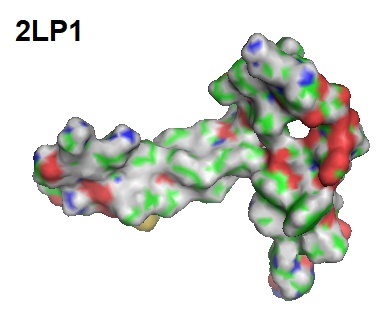In organisms, genetic mutations can arise in fertilized eggs as well as in subsets of cells. Somatic mosaicism refers to the presence of two genetically distinct populations of cells within an individual originating from postzygotic mutations. In humans, these somatic mutations are not transmitted to children but can affect different genomic sizes ranging from single nucleotides to entire chromosomes. Medical researchers now think that somatic mosaicism can cause cancer, neurodegenerative, as well as monogenic, and complex diseases.

Figure 1. C99. C99 is the transmembrane carboxyl-domain of the amyloid precursor protein (APP) cleavaged by ϒ-secretase releasing amyloid-beta polypeptides (Barrett et al. 2012).
Recently, several reports have shown that individual neurons of the brain can display somatic genomic mosaicism. Bushman et al., in 2015, reported that Alzheimer’s disease neurons show increases in DNA content and amyloid precursor protein (APP) gene copy numbers. Alzheimer’s currently afflicts more than 20 million people worldwide.
Bushman et al. found that neurons from people with sporadic Alzheimer’s disease contained more DNA and had more copies of the Alzheimer-related gene APP than neurons from people without the disease. More recently, the analysis of APP variants by Lee et al., in 2018, revealed the presence of many APP mRNA variants in neurons from Alzheimer patients. Detailed analysis showed that many variants lacked introns leaving only protein-coding exons. Also, these variants were shorter than expected and contained single-nucleotide mutations, inserted and deleted exons as well as larger deletions. Larger deletions appear to lead to the formation of new exon-exon junctions between missing multi-exon regions.
Furthermore, the same short variants are found in genomic DNA of neurons. These findings suggested that the APP-variant mRNA may have been transcribed from matching genomic DNA sequences (gencDNAs), which are now permanently embedded in the genomes of neurons. For the validation of these findings, DNA in situ hybridization (DISH) together with sequencing short sections of APP DNA was used to verify their presence.
To conclude, this study revealed the existence of a phenomenon called somatic recombination in the brain. Somatic recombination increases the diversity of proteins encoded by a given gene through DNA-shuffling mechanisms. However, the precise physiological function of APP is presently not known, and more molecular studies are needed to solve the nature of this mechanism to gain answers that allow the development of therapies for Alzheimer’s disease.
Reference
Barrett PJ, Song Y, Van Horn WD, et al. The amyloid precursor protein has a flexible transmembrane domain and binds cholesterol. Science. 2012;336(6085):1168-71.
Bushman DM, Kaeser GE, Siddoway B, et al. Genomic mosaicism with increased amyloid precursor protein (APP) gene copy number in single neurons from sporadic Alzheimer's disease brains. Elife. 2015;4:e05116. Published 2015 Feb 4. doi:10.7554/eLife.05116.
Freed D, Stevens EL, Pevsner J. Somatic mosaicism in the human genome. Genes (Basel). 2014;5(4):1064-94. Published 2014 Dec 11. doi:10.3390/genes5041064.
Larracuente, A. M., & Ferree, P. M. (2015). Simple method for fluorescence DNA in situ hybridization to squashed chromosomes. Journal of visualized experiments : JoVE, (95), 52288. doi:10.3791/52288.
Lee, Ming-Hsiang, Siddoway, Benjamin, Kaeser, Gwendolyn E., Segota, Igor, Rivera, Richard, Romanow, William J., Liu, Christine S., Park, Chris, Kennedy, Grace, Long, Tao, Chun, Jerold; Somatic APP gene recombination in Alzheimer’s disease and normal neurons. Nature 2018, 563, 639-645.
O'Brien RJ, Wong PC. Amyloid precursor protein processing and Alzheimer's disease. Annu Rev Neurosci. 2011;34:185-204.
Peptides for neuroscience research: http://www.biosyn.com/newsletters/neurodegenerative-diseases.html
---...---